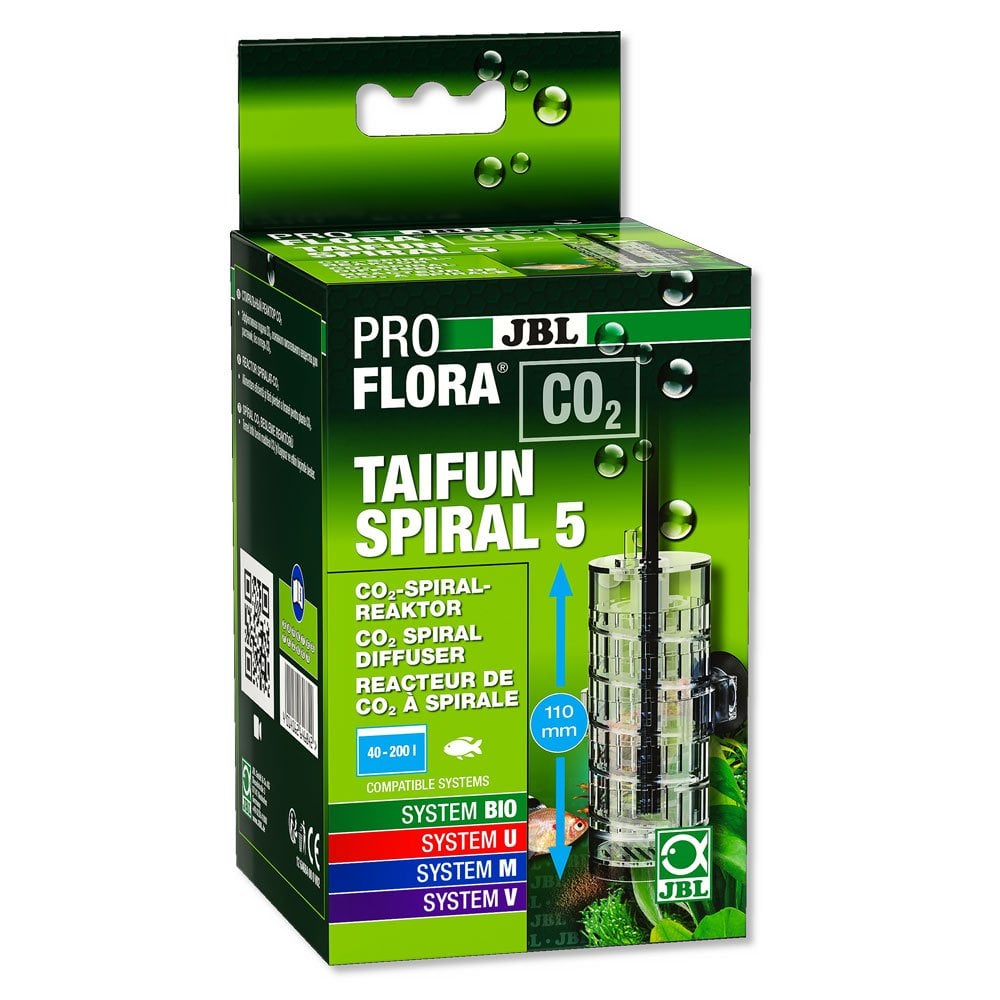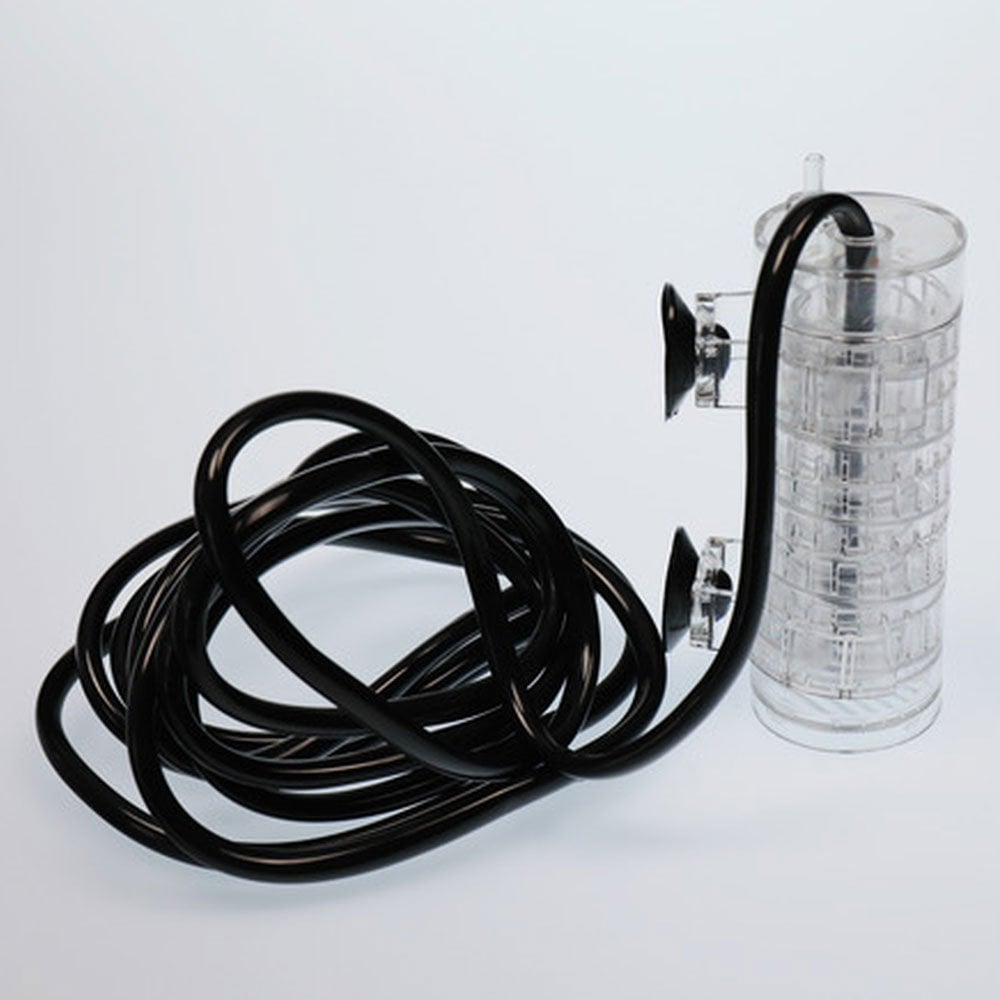-
Same Day Dispatch On orders placed before 2pm
-
Our Customers Love Us Platinum Trusted on Feefo
-
Dedicated Customer Support Call us on 01642 612 419
-
Pond Points Loyalty Scheme 2 Points for every £1 spent online
JBL ProFlora CO2 Taifun Spiral 5
ProFlora CO2 Taifun Spiral 5
Product Code: 6468400
- Provides loss-free enrichment of CO2 in freshwater aquariums from 40 to 200l
- Simple and easy to install
- Visible and efficient diffusion of CO2
- Can be extended for larger aquariums
- Can be dismantled, making it easy to clean
- Made from sturdy Makrolon
- Includes collection cap to prevent CO2 loss
- Operates without additional pump
- No separate bubble counter required
- Suitable for most common CO2 systems
- 110mm High - Although modular design allows fitting in almost any height aquarium
Couldn't load pickup availability
Description
Description
The JBL ProFlora CO2 Taifun Spiral 5 Diffuser supplies carbon dioxide in evenly sized bubbles and is suitable for use with most common CO2 systems. The Taifun Spiral 5 CO2 Diffuser is suitable for aquariums from 40 to 200 litres and is very easy to install. Simply attach the diffuser via the holding clips complete with suction cups in the aquarium, then connect the diffuser using 4/6mm CO2 hose to the CO2 System (not included).
CO2 enters the lowest module of the Taifun Spiral Diffuser in bubbles via the CO2 supply hose. The visible and therefore countable bubbles rise upwards in a spiral motion through the reactor during which the CO2 dissolves in the aquarium water. In this way, the CO2 system supplies the aquarium plants with their main nutrient, carbon dioxide for healthy plant growth. If the desired CO2 content is not achieved even though the bubble count has been increased, the reactor can be extended by adding further modules. This extends the path for the CO2 bubbles and more CO2 can be added. The only limitation is the height of the aquarium.
The correct CO2 amount varies from aquarium to aquarium and depends on the volume, the water movement and the planting of the aquarium. You can check the CO2 content by means of a CO2 test.
JBL ProFlora CO2 Taifun Spiral 5 Package Contents:
- 5 x CO2 reactor standard modules
- 1 x CO2 reactor base module with hose connection
- 1 x CO2 reactor top collection cap module
- 2 x Holding clips with suction cups
- 1 x 3m Special CO2 hose
Why don’t the CO2 bubbles dissolve completely?
On their way up, the bubbles release CO2 into the aquarium water, but at the same time absorb other gases from the water, because these gases are more concentrated in the aquarium water than in a CO2 bubble. Therefore, the CO2 content in the bubble decreases and, for example, the oxygen and nitrogen gas content increases. At the end of its journey through the CO2 reactor, it has clearly become less, but it only contains as much CO2 as the surrounding water and all the gases that are also contained in the aquarium water.
Delivery & Returns
Delivery & Returns
Cut Off Time
Order by 2pm Monday to Friday for same day dispatch (Excluding Bank Holidays).
Direct/Palletised Delivery items may take longer.
Orders Under £49
Standard Delivery (2-3 working days) - £3.99
Express Delivery (1-2 working days) - £5.99
Orders Over £49
Standard Delivery (2-3 working days) - FREE!
Express Delivery (1-2 working days) - £2.99
Timeframes are for standard mainland UK addresses only excluding NI, Scottish Highlands & Islands.
Palletised Deliveries
Some large oversize products, typically items weighing more than 30kg, may require delivery via pallet and as such will arrive as a kerbside delivery only. The drivers in these instances are unfortunately not permitted to assist with the pallet beyond the drop off, and cannot aid in bringing packages into the property.
Pond Planet will contact you to book in delivery on a suitable working day. Delivery will generally take place between 9am and 5pm. To ensure there are no delays with delivery, please include a contact number when placing the order.
Pond Plant Deliveries & Surcharge
Pond plants are subject to a £5.99 delivery surcharge. Pond plants are sent directly from our supplier to make sure the plants you receive are fresh and in great condition. There is no limit on how many you can order for a single delivery charge. This charge is in addition to any other carriage costs for items sent directly from Pond Planet. Please allow 5 -10 working days for delivery.
Returns
If for any reason you are not satisfied with your purchase from Pond Planet, you may return the product(s) to us within 14 days of the purchase date for a refund or exchange.
Goods must be returned in perfect and unused condition, in their original packaging. The buyer must ensure that the goods are securely and adequately packed to avoid damage and the purchaser pays all postage costs. We recommend that products are returned by recorded delivery or by a carrier that requires a signature. Pond Planet accepts no responsibility for goods returned to us unless signed proof can be provided.
-
Same Day Dispatch On orders placed before 2pm
-
Our Customers Love Us Platinum Trusted on Feefo
-
Dedicated Customer Support Call us on 01642 612 419
-
Pond Points Loyalty Scheme 2 Points for every £1 spent online


Get Expert Advice
If you have any questions or queries regarding our products or services please do not hesitate to get in touch. Our helpful team of experts are waiting on hand and want to hear from you!

Loyalty Pays!
As a thank you from us to you, we have launched our loyalty point scheme, so you can get the best out of what you spend online!


